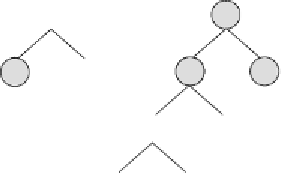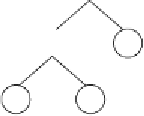Information Technology Reference
In-Depth Information
two new daughter chromosomes (chromosomes 3 and 5 of generation 2).
Note that chromosome 5 is less fit than its parents, whereas chromosome 3
surpasses them both considerably. Indeed, this new individual has maximum
fitness and therefore codes for a perfect solution to the problem at hand.
It is worth emphasizing that gene recombination is unable to create new
genes: the individuals created by this operator are different arrangements of
existing genes. Obviously, if gene recombination were to be used as the unique
source of genetic variation, more complex problems could only be solved us-
ing very large initial populations in order to provide for the necessary diversity
of genes (see the Evolutionary Studies of chapter 12 for a discussion). How-
ever, GEP evolvability is based not only in the shuffling of genes (achieved by
gene recombination and gene transposition), but also in the constant creation
of new genetic material which is carried out essentially by mutation, inver-
sion, and transposition (both IS and RIS transposition) and, to a lesser extent,
by recombination (both one-point and two-point recombination).
c.
dA:
Sub-ET
1
A
Sub-ET
2
A
Sub-ET
3
N
c
a
a
O
O
c
A
N
N
c
b
b
b
dB:
Sub-ET
1
Sub-ET
2
Sub-ET
3
A
A
N
a
b
b
N
O
a
a
O
c
A
b
b
Figure 3.29.
Continued.













